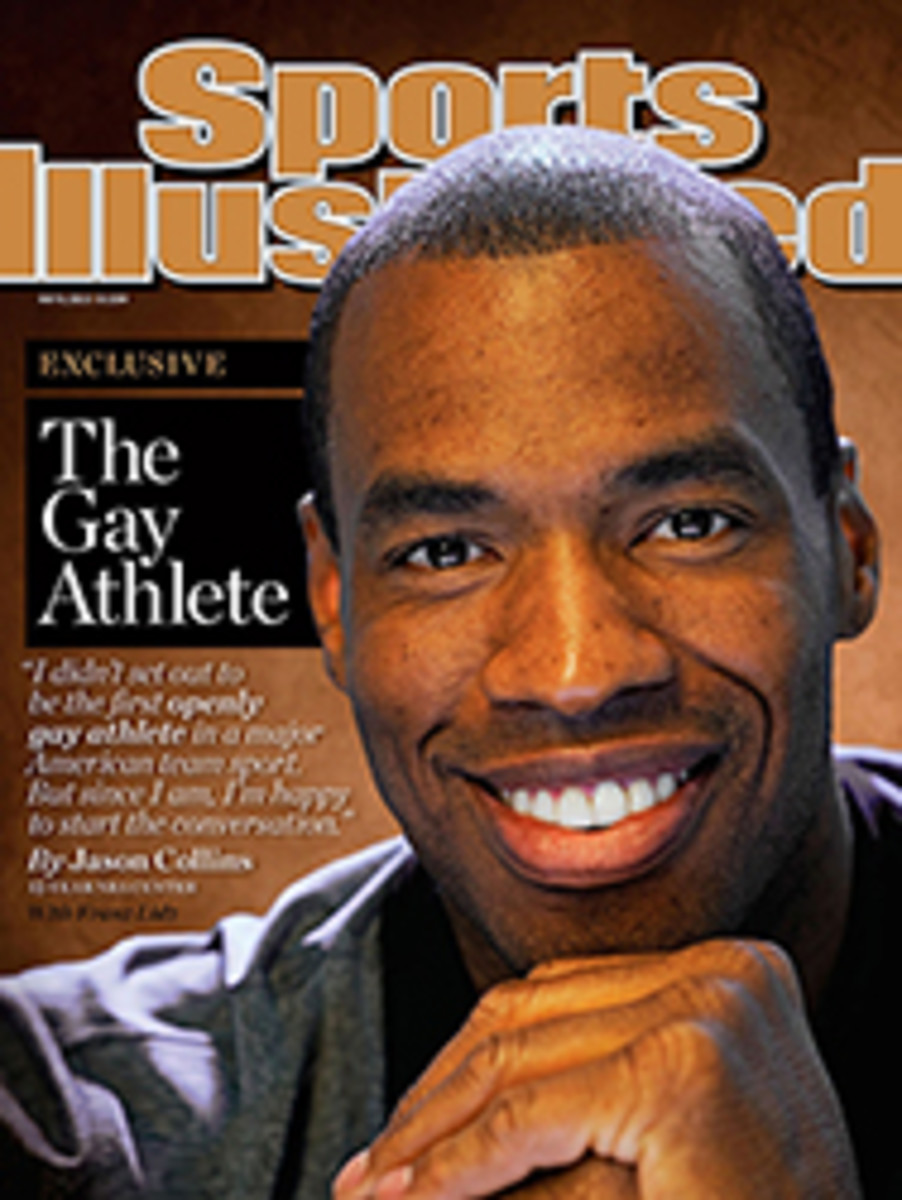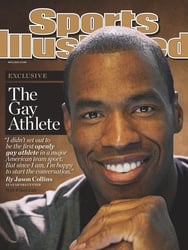
The Prose Pro
When Walter Wellesley Smith, proud son of Green Bay, was a student at Notre Dame in the 1920s, a writing instructor taught him that a sentence should be "so definite that it would cast a shadow." Three decades later, Smith nailed it. In the late afternoon or early evening of October 3, 1951, Smith—by then long known to readers across the country by his nickname, Red—wrote the platonic ideal of a column about a major sports event. This was the day that Bobby Thomson's ninth-inning home run lifted the National League pennant from the pocket of the Brooklyn Dodgers and placed it in the hands of the New York Giants. By the time the New York Herald Tribune landed on doorsteps the following morning, there were very few New Yorkers who did not know what had happened the previous afternoon in upper Manhattan. About halfway into the piece, Smith begins to give some of the details of the game before stopping, mid-recitation, to ask, "Oh, why bother?"
A sort of existential frustration had led Smith to turn the piece inside out and create as fine a lead as any sportswriter has ever written. More than 60 years later, it feels as immediate, and as definitive, as it must have on the day it was published. Listen:
Now it is done. Now the story ends. And there is no way to tell it. The art of fiction is dead. Reality has strangled invention. Only the utterly impossible, the inexpressibly fantastic, can ever be plausible again.
These few sentences reveal some essential aspects of the technique that made Smith not just our greatest sportswriter, but able to stand with the finest American prose artists of the 20th century. There is the simple string of taut, declarative sentences—sentences that cast a shadow. There is no preening syntax, which might explain why Ernest Hemingway admired Smith so much. There are no distractions: Dashes, ellipses, parentheticals, and all the other prosy hems and haws we lesser writers depend upon are absent.
We're all taught to use powerful verbs, but few of us would summon strangled, which serves as the fulcrum for the entire paragraph. And then there's Smith's gift for rhetorical invention—for instance, "The art of fiction is dead." Killing off fiction because of a baseball game is ingenious, amusing and audacious. With very few exceptions, Smith's metaphors, similes and other devices were as sharp as ... well, I'd better not go there. Better to stand in the shadow than attempt to outshine it.
SHORTLY AFTER Red Smith joined the Herald Tribune in 1945, he received another bit of priceless advice. Stanley Woodward, the Trib's celebrated sports editor, sent a fistful of writers to cover the World Series. But he gave Smith no specific assignment, and when the columnist asked him what he was supposed to do, Woodward told him to "write about the smell of cabbage in the hallway." In other words, keep your senses open and alert, and you'll find something that no one else is paying attention to.
This couldn't have been a revelation to Smith—an intense focus on the sideshow to the main event was essential to his craft. Not the roaring cars hurtling around the Indianapolis Speedway, but the faces and clothing and refreshment choices of the crowd in the infield. Not the punch that knocked out the champion, but the look in his eyes as he struggled to rise from the canvas.
Smith arrived at the Trib after shaping his style and reputation at newspapers in Milwaukee, St. Louis and Philadelphia. Over the next 22 years his column, "Views of Sport," propelled him to national renown. In 1958 his face decorated the cover of Newsweek, above the words STAR OF THE PRESS BOX. Edward R. Murrow brought a CBS crew to his house in Connecticut—they had to erect a transmission tower in the backyard—for a live broadcast of Person to Person. He assumed permanent occupancy at table number 1 at Toots Shor's, the Manhattan saloon that functioned as command-and-control center that determined the nation's sense of sports. His column was syndicated to more than 100 papers across the country, and reached across the Atlantic as well: In Across the River and into the Trees, Hemingway describes his protagonist, Richard Cantwell, sitting in Venice with a glass of Valpolicella and a copy of the international edition of the Herald Tribune, reading a Smith column.
Pristine ear and sharpened eye were not the only elements of Smith's technique. Among the others: heightened irony (a line drive that "performed an appendectomy" on a third baseman); an endearing, if somewhat disingenuous, self-deprecation (describing himself: "a seedy amateur with watery eyes" and "a hole in his frowzy haircut"); and what the political columnist James J. Kilpatrick called his "wonderfully funny, pool ball sense of humor; he could play caroms and cushions before hitting his target."
In Red's world, fans at a wintry Harvard-Yale game were "wrapped thickly in the skins of dead animals." In the 1946 World Series, as the Cardinals' Enos Slaughter sped home with the winning run, Boston shortstop Johnny Pesky didn't pause before throwing to the catcher, he "stood morosely studying Ford Frick's signature on the ball." My favorite Smith line might be the one he wrote after Richard M. Nixon announced the lineup for his own personal baseball all-star team. "When you regard him as a sportswriter," Smith wrote, "you can't help feeling that he really ought to go back to being President of the United States. That's a dreadful, difficult line to write."
There's nothing to writing," Smith liked to say. "All you do is sit down at the typewriter and open a vein." As much as he disliked the act of writing, he loved the reporting. For Smith, an interview was a conversation, less question-and-answer exercise than bantering dialogue, never made formal by the intrusion of pen or tape recorder. He never took notes. His ear for the music of speech enabled him to preserve the salient quotes, just as his eye could capture the revealing facial expression. Then he'd summon a fully realized individual from his typewriter.
His favorite spectator sports were baseball, boxing and thoroughbred racing. Fishing was the only sport he participated in; his fishing columns were his most personal pieces, written in a tranquillity other sports rarely afforded him. If most sports page readers had no interest in fishing itself, they could still be captured by perfect little sentences like this one from 1950: "A pair of loons flew overhead, taking their time."
I think Smith most loved the fights, and the fighters, and the trainers, and even a few of the promoters. He generally abided the essential violence of boxing, confining his outrage to the occasional dishonesty of a fighter's performance. Apart from his rare pieces about political subjects, I don't think Smith ever summoned outrage equal to his condemnation of Jersey Joe Walcott's mendacious 1953 rematch with Rocky Marciano. Walcott made no visible effort, and to Smith this was a capital crime. "Walcott was guaranteed a quarter of a million dollars for this night's work," he wrote. "If its finish guarantees his departure from boxing, the price was not too great."
In 1967, the Trib's successor, the World-Journal-Tribune, closed its doors. After four chilly years during which Smith's only New York outlet was Women's Wear Daily, The New York Times brought him in from the cold, and in 1976 he won a Pulitzer for commentary. For the next 11 years he wrote more energetically about the NFL than he had before, but mostly he remained attached to boxing, baseball and the ponies. He had a lot to say about Muhammad Ali—first crankily negative, later largely positive—and also about Secretariat and Henry Aaron and Reggie Jackson and Seattle Slew. Memorial columns eulogizing men he had known in his long career appeared more frequently. So did ambling, loose-limbed pieces connecting the sporting present to the sporting past.
On Jan. 11, 1982, the headline above Smith's column read WRITE LESS—AND BETTER? In the second sentence he announced that he was cutting back to three columns a week. Then he goes about his digressive way, recalling the years when he wrote seven times a week, which leads to an anecdote set at Arlington Park in Chicago, which in turn yields a lovely anecdote about Sonny Liston. Almost as if catching his breath, he stops to report that the two questions he is most often asked are "Of all those you have met, who was the best athlete?" and "Which one did you like best?" This had an oddly valedictory ring to it, as did the very last line: "Some day there would be another Joe DiMaggio."
That was the last sentence Red Smith wrote. He died four days later, having traveled something like 8,000,000 words from Green Bay.
"There's nothing to writing," Smith said. "All you do is sit down at the typewriter and open a vein."
TABLET EXTRA
To read columns Red Smith wrote in 1954 for the first two issues of SI, download the SI digital edition, available free to subscribers at SI.com/activate
PHOTO
Photograph COURTESY OF THE NEW YORK RACING ASSOCIATION
A LIFE WELL RED His sharpened eye and pristine ear made Smith (at Aqueduct Racetrack in 1960) a must-read for every big event.
PHOTO
AP
WRITE ON Thomson's shot in 1951 set off pandemonium in New York—and inspired Smith to write what may well be the perfect column about a major sports event.
PHOTO

